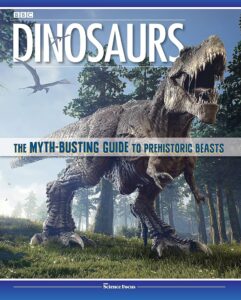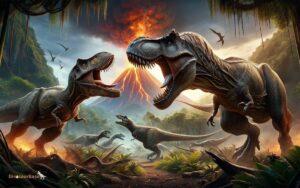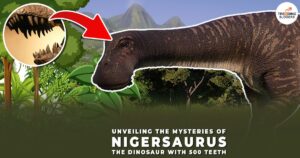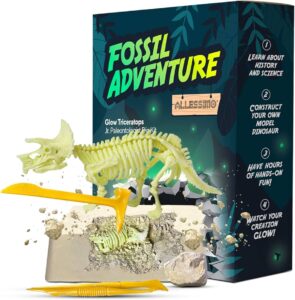Are Dinosaurs Mentioned in the Bible? Unearthing Truths
Dinosaurs are not explicitly mentioned in the Bible. The historical texts of the Bible do not reference these ancient creatures by name.
In exploring the connection between dinosaurs and biblical texts, readers often seek to reconcile scientific discoveries with religious teachings. A common subject of debate is whether the biblical “behemoths” or “leviathans” referred to in Job and Psalms could be descriptions of dinosaur-like creatures.
Yet, these discussions remain speculative, as the exact nature of these creatures is not clearly defined in the scriptures. Rather than providing concrete evidence of dinosaurs, these passages often fuel a broader dialogue on the intersection of faith and science. The study of dinosaurs thus represents a fascinating juncture of paleontology and theology, inviting both believers and scholars to ponder the mysteries of the earth’s ancient inhabitants within a biblical framework.

Credit: www.sci.news
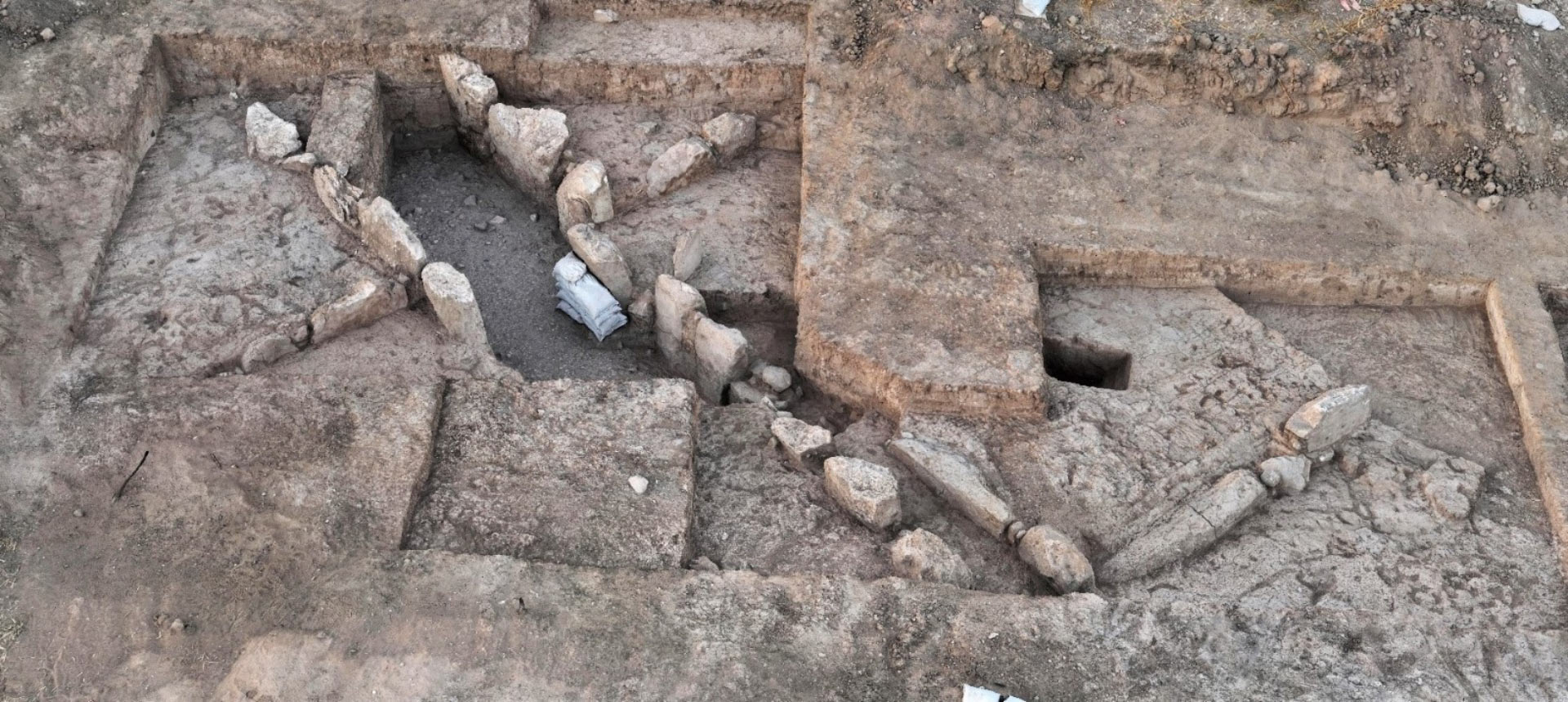
Fossil Discoveries And Scriptural Records
Dinosaurs captivate our imagination and offer a glimpse into a prehistoric past. Fossil discoveries have sketched outlines of these colossal creatures. Yet, a question arises: Do dinosaurs have a place in biblical narratives? The Bible is an ancient text that guides many in wisdom and history, while paleontology shadows an evolutionary timeline. Reconciling the two has often sparked debates among scholars and believers alike. Let’s delve into the relationship between fossil records and scriptural accounts.
Reconciling Paleontology With Theology
Two fields, one query: can scientific discoveries of dinosaur fossils coexist with the scriptural writings? Some theologians argue that these magnificent creatures walked the Earth during the biblical era. They point at certain biblical creatures as possible dinosaur references. Conversely, scientists consider the dinosaurs’ extinction to predate human existence.
Finding a middle ground, certain scholars suggest that the Bible does not deny the existence of dinosaurs. Instead, it may not mention them explicitly due to their insignificance in biblical times. Through a metaphoric lens, descriptions might fit some known dinosaur characteristics.
Historic Perceptions Of Dinosaurs
Historic accounts before paleontological studies never defined ‘dinosaurs’. Ancient cultures depicted large, mythic beasts in folklore and art. The term ‘dinosaur’ only emerged post-fossil discoveries in the 19th century. Scriptures, written centuries ago, narrate encounters with great beasts. Reflecting on these, some may draw parallels between them and the dinosaurs we now know.
Renowned fossils like the Behemoth or Leviathan in Job’s verses stir intrigue. These portrayals may hint at encounters with dinosaur-like animals. This idea, however, remains open to interpretation and debate.
Below is a table that highlights speculated biblical references to dinosaur-like creatures:
| Scriptural Reference | Possible Dinosaur | Description in Scripture |
|---|---|---|
| Book of Job | Behemoth | “…tail like a cedar tree…” |
| Psalms | Leviathan | “…a creature without fear…” |
| Isaiah | Drafts | “…reptile on the dust…” |
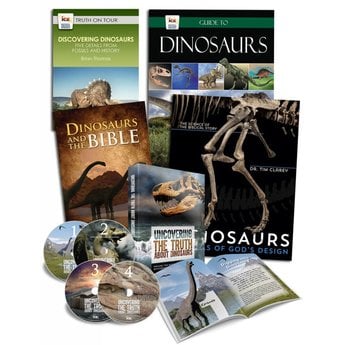
Credit: store.icr.org
Mythical Creatures In Biblical Texts
Have you ever wondered about the fantastic beasts in the Bible? These creatures spark imaginations and debates among readers. They seem to stretch beyond the natural world we know. In ancient texts, some creatures might appear mythical to us today. Let’s dive into the biblical descriptions and ponder if any could be dinosaurs.
Leviathan And Behemoth: Are They Dinosaurs?
The Bible speaks of Leviathan and Behemoth. These names conjure images of giant beasts. Some people think they describe dinosaurs. Others believe they are symbols of chaos and power.
Leviathan appears in Job 41. It is a sea creature with fearsome features. Could Leviathan be a dinosaur that lived in water? It might be. But, the text also uses it in a poetic manner, suggesting it could symbolize something bigger.
Behemoth is another giant creature found in Job 40. Its strength is in its loins, and its power in the muscles of its belly. This description leads some to think of sauropod dinosaurs. Yet, it’s important to note that the context of Behemoth is not clear-cut.
- Fearsome sea monster – a possible interpretation for Leviathan.
- Mighty land giant – how some view Behemoth.
- Symbols of chaos and power – another angle seen by scholars.
Dragons In Ancient Writings
Dragons rise from the pages of ancient manuscripts, including the Bible. These creatures, often fierce and fire-breathing, grab our attention.
In the Bible, dragons are mentioned in several places. For instance, in the book of Revelation, a dragon symbolizes evil. Is this a literal creature, or is it metaphorical?
The truth may lie in history and culture. Dragons were common in stories from the past. They represented many things. Sometimes, they were warnings. Other times, they stood for chaos or evil.
| Scripture | Dragon Description | Possible Meaning |
|---|---|---|
| Revelation | Evil, multi-headed dragon | Symbol of chaos and evil |
| Old Testament | Fierce creatures | Challenges or trials |
While some argue these might be extinct reptiles, such as dinosaurs, many scholars see them as symbols or metaphors, rather than actual creatures that roamed the earth alongside humans.
Interpretations Of Job’s Behemoths And Leviathans
The Bible’s verses inspire endless interpretations, sparking curiosity and debate. Among these, the mysterious creatures mentioned in the Book of Job stand out. Direct references to ‘Behemoths’ and ‘Leviathans’ have intrigued scholars and lay readers alike. Do these creatures point towards the existence of dinosaurs in biblical times? Let’s dive into the ancient scriptures to explore interpretations of Job’s behemoths and leviathans.
Analyzing Original Hebrew Descriptions
The original Hebrew text of the Bible provides detailed descriptions of these creatures. To unravel their identities, let’s examine the actual Hebrew words used.
- ‘Behemoth’ is depicted as a powerful, grass-eating animal with strong limbs and a tail like a cedar tree.
- The ‘Leviathan’ is described as a fearsome sea creature, emitting fire and smoke, impervious to human capture.
These descriptions evoke images of colossal beasts, far removed from common wildlife.
Scholarly Debates On Biblical Creatures
Debates on these biblical creatures span centuries. Opinions vary widely among experts.
| Scholarly View | Interpretation |
|---|---|
| Literal | Behemoth and Leviathan are real animals from Job’s era, possibly dinosaurs or mammoth creatures. |
| Symbolic | The creatures symbolize chaos and evil, used metaphorically to convey moral lessons. |
| Mythological | These are mythical beasts, common in Ancient Near Eastern texts, with no basis in reality. |
Each perspective brings unique understanding to the ancient scripture’s enigmatic mentions of Behemoth and Leviathan.
Clear-cut answers elude us. The debate continues, contributing to the rich tapestry of biblical exploration.
Dinosaurs’ Existence Relative To Biblical Timescales
Exploring how dinosaurs fit into the Biblical timeline sparks a mix of wonder and intrigue. Many people ask if these magnificent creatures walked the earth alongside humans or if they belong to a distant, separate chapter of the planet’s history. The Bible does not mention dinosaurs explicitly, but interpretations vary as we align the prehistoric existence of dinosaurs with biblical chronologies. Two prominent views arise: the Young Earth Creationist perspective, and the Old Earth viewpoint, each considering dinosaurs’ existence through a different lens.
Young Earth Creationism And Dinosaurs
Young Earth Creationists believe that all life, including dinosaurs, was created by God about 6,000 to 10,000 years ago. This timeline is deduced from the genealogies listed in the Bible. They argue that humans and dinosaurs coexisted.
- Biblical creatures like Behemoth and Leviathan may be references to dinosaurs.
- Fossil evidence is seen as remnants of the creatures that perished during the Great Flood.
Old Earth Perspectives And Dinosaur Eras
In contrast, Old Earth proponents accommodate the scientific understanding that the earth is approximately 4.5 billion years old. They suggest that dinosaurs existed long before humans.
| Period | Timeline |
|---|---|
| Triassic | About 250 to 200 million years ago |
| Jurassic | About 200 to 145 million years ago |
| Cretaceous | About 145 to 66 million years ago |
They often reconcile their beliefs with science by interpreting the days of creation in Genesis as long periods.
The Great Extinction: A Biblical Correlation?
Many wonder if the Bible references the great beasts of ancient times. Debates abound about the presence of dinosaurs in biblical text. The Great Extinction and its possible correlation with the Bible stir curiosity and discussion. This exploration may shed light on how Scripture might intersect with prehistoric events.
Noah’s Flood And Dinosaur Fossils
Dinosaur fossils continue to fascinate scientists and enthusiasts alike. Some creationists propose that Noah’s Flood could explain the sudden demise of dinosaurs. They suggest that this biblical catastrophe led to the formation of fossil layers.
- Floodwaters may have rapidly buried creatures.
- Geological upheaval could describe sediment layers.
- Fossils found on mountain tops are considered evidence of a global flood.
Bible passages often referred to include descriptions of great creatures such as “Behemoth” or “Leviathan,” sparking interpretations that these may be dinosaurs. Wide acceptance of this theory remains elusive within the scientific community.
Mass Extinction Events And Biblical Records
Biblical records of extensive devastation draw lines to mass extinction events. The idea of a world-altering flood counts as one such event. It is speculated whether this narrative correlates with known extinction events in Earth’s history.
| Biblical Event | Scientific Event |
|---|---|
| Great Flood | End-Cretaceous Extinction |
While some correlate the two, geological timelines present a challenging discrepancy. Consideration of scriptural metaphor versus scientific evidence remains at the forefront of this discourse.
Understanding of these texts and fossils continues to evolve. Dialogue between theology and paleontology breathes life into our quest for knowledge. Correlation or not, the discussion opens doors to historical inquiry and cross-disciplinary learning.
Educational And Religious Implications
Exploring the existence of dinosaurs raises questions that touch both educational systems and religious beliefs. Integrating this debate into curricula and doctrine often leads to passionate discussions. Let’s delve into the educational approaches to this topic and examine varied church standpoints on the matter.
Teaching The Dinosaur Debate In Schools
Dinosaurs fascinate children and adults alike, yet how educators address this topic varies widely, considering scientific perspectives and cultural influences. Lessons on dinosaurs can reinforce critical thinking and demonstrate the scientific process in action. They can include:
- Examining fossil evidence
- Understanding Earth’s historical timeline
- Analyzing scientific theories versus myths
Controversy arises when paleontology intersects with religious teachings about Earth’s age and creation. Some argue for presenting all viewpoints, including creationism, in the spirit of academic freedom. Others push for strict adherence to scientific evidence. This debate prompts educators to tread carefully, balancing diverse beliefs while maintaining scientific integrity.
Church Positions On Dinosaurs And Creation
Religious groups differ in their interpretation of dinosaurs within their creation narratives. Major church stances include:
| Denomination | View on Dinosaurs |
|---|---|
| Young Earth Creationists | Believe dinosaurs coexisted with humans, citing a literal interpretation of biblical texts. |
| Old Earth Creationists | Accept scientific dating of dinosaurs, see no conflict with religious texts. |
| Theistic Evolutionists | View evolution as part of God’s creation process, including the existence of dinosaurs. |
Some denominations accept fossil records and evolutionary science without viewing it as contradictory to their faith. Others adopt a more literal biblical view, sparking ongoing debates. Concrete positions on these matters may vary even within the same faith.

Credit: www.amazon.com
Frequently Asked Questions For Are Dinosaurs Mentioned In The Bible
What Do Christians Say About Dinosaurs?
Christians have varied views on dinosaurs. Some integrate them into a biblical creation framework, while others align with scientific consensus on dinosaur evolution and extinction millions of years ago.
Did Dinosaurs And Humans Exist At The Same Time?
No, dinosaurs and humans did not coexist. Dinosaurs went extinct about 65 million years ago, while humans evolved much later.
What Does The Bible Say About Dinosaurs And Cavemen?
The Bible does not explicitly mention dinosaurs or cavemen, as these concepts were developed long after the biblical texts were written.
Are Dragons Mentioned In The Bible?
Yes, dragons are mentioned in the Bible. They appear in various passages, symbolizing chaos and evil.
Conclusion
As we delve into ancient texts, the question remains: do dinosaurs grace the Bible’s pages? Despite varying interpretations, no definitive mention exists. Scripture may hint at behemoth creatures, but clear references to dinosaurs as we understand them today are not present.
Our quest for answers continues to blend faith with paleontology’s discoveries. Keep exploring, and stay curious.


